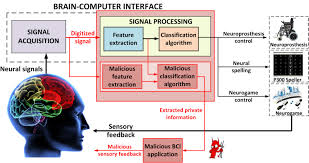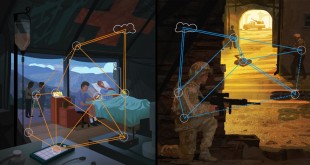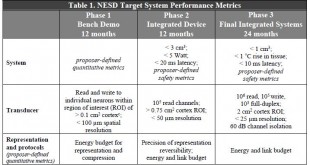New era has arrived when people use only their thoughts to control not only themselves, but the world around them. Every action our body performs begins with a thought, and with every thought comes an electrical signal. The electrical signals can be received by the Brain-Computer Interface (BCI), which can electroencephalograph …
Read More »Yearly Archives: 2018
The growing Sri Lanka- China – Pakistan economic and military relationship poses threat to India
Sri Lanka has signed a $1.1bn (£837m) deal with China for the control and development of the southern deep-sea port of Hambantota. Under the proposal, a state-run Chinese company will have a 99-year lease on the port and about 15,000 acres nearby for an industrial zone. Sri Lanka’s government says …
Read More »DARPA’s Dispersed Computing (DCOMP) aims to dynamically boosts computing power for real-time battlefield understanding
In military applications, particularly those oriented toward real-time battlefield understanding, synthesis of actionable information from diverse data sources in near real-time becomes an important requirement. In the current art, users with significant computing requirements have typically depended on access to large, highly shared data centers to which they backhaul their …
Read More »DARPA NESD developing high bandwidth implantable neural interfaces for controlling machines with brain and mind control of soldiers
Neural interfaces currently approved for human use squeeze a tremendous amount of information through just 100 channels, with each channel aggregating signals from tens of thousands of neurons at a time. The result is noisy and imprecise. DARPA announced NESD in January 2016 with aim to develop to develop an implantable …
Read More »DARPA’s 1000X efficient graph analytics processor enables real-time identification of cyber threats, and vastly improved situational awareness
Today large amounts of data is collected from numerous sources, such as social media, sensor feeds (e.g. cameras), and scientific data. There are over 1 billion websites on the world wide web today and the Annual global IP traffic will reach 3.3 ZB per year by 2021, or 278 exabytes …
Read More »US Navy is developing future multimission guided Missile Frigate (FFG(X)), with large power-projection capabilities
The US Navy’s “Littoral Combat Ship” program developed a new generation of affordable surface combatants that could operate in dangerous shallow and near-shore environments, while remaining affordable and capable throughout their lifetimes. LCS was designed for countering Asymmetric and A2/AD threats. However according to experts expressed doubt about its power …
Read More »Militaries exploring Venture Capitalism to fund Research and Development
Chinese firms have become significant investors in American start-ups working on cutting-edge technologies with potential military applications. The start-ups include companies that make rocket engines for spacecraft, sensors for autonomous navy ships, and printers that make flexible screens that could be used in fighter-plane cockpits. Many of the Chinese firms …
Read More » International Defense Security & Technology Your trusted Source for News, Research and Analysis
International Defense Security & Technology Your trusted Source for News, Research and Analysis






